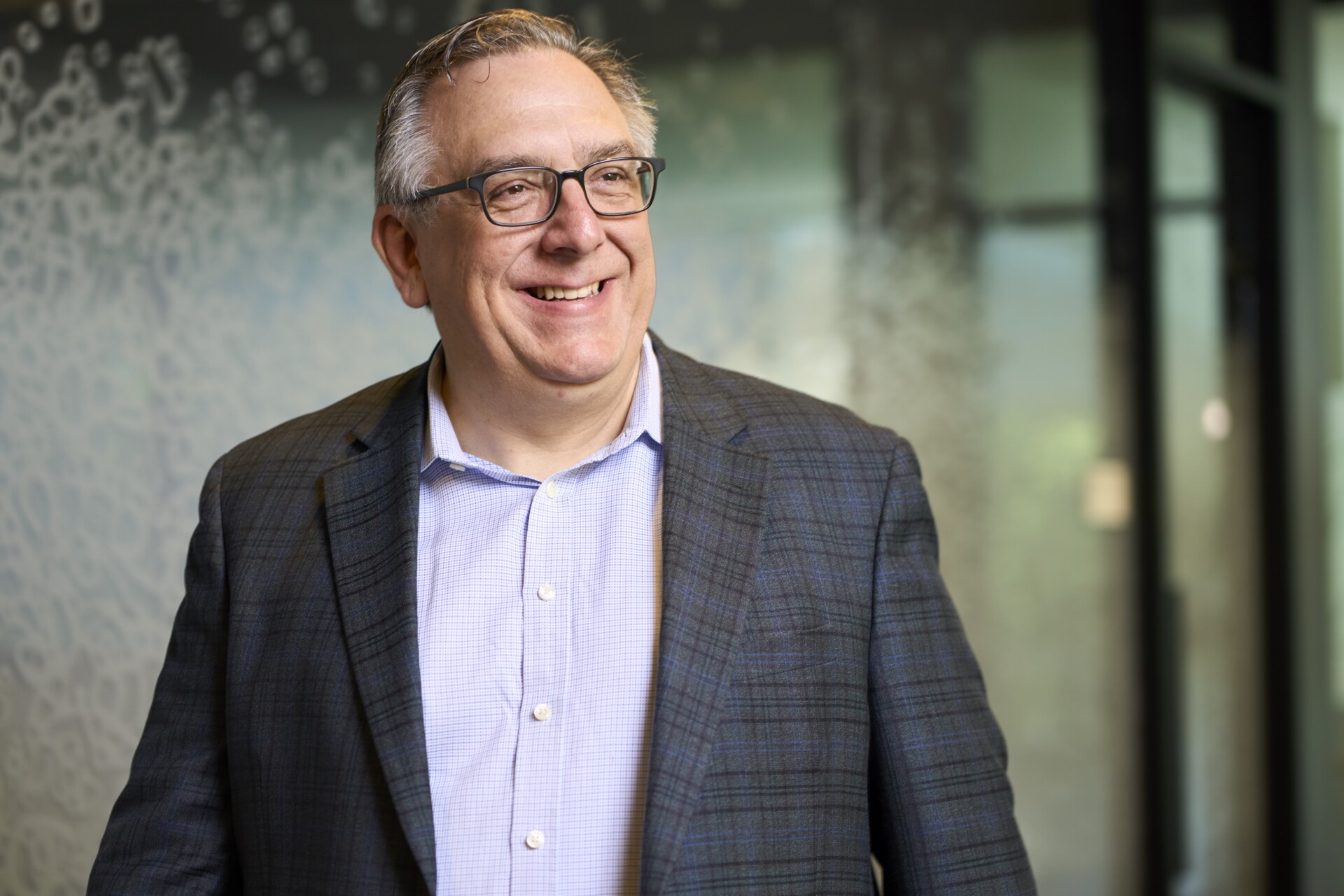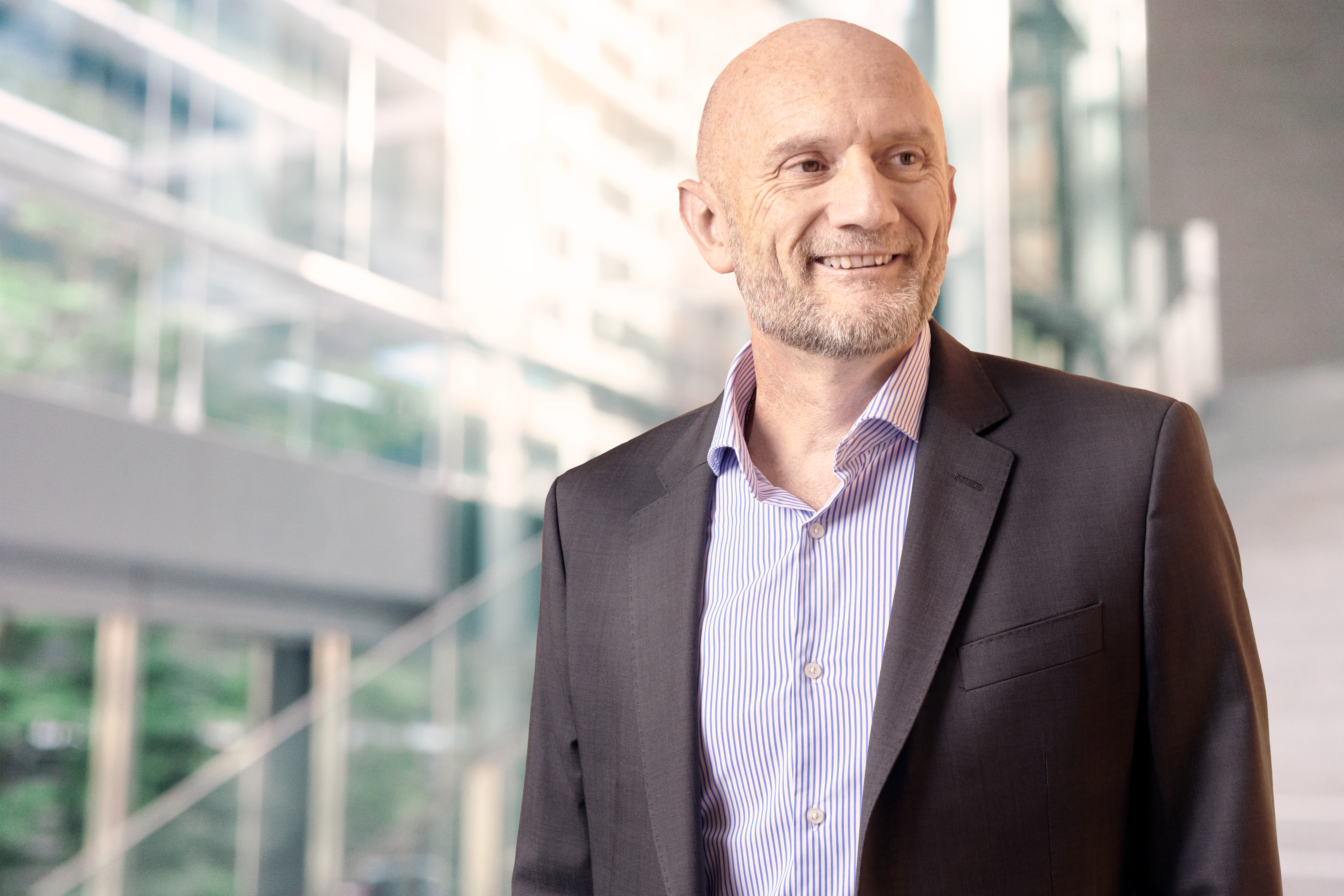Takeda Vaccines’ Change Initiative
It is easy for organizations to slip into the safety of the status quo.
But leaders looking to drive breakthrough results must be willing to push boundaries and discard old habits that stand in the way.
Such was the case for Scot Shepard, senior director of bioprocess innovation at Takeda Vaccines. For more than a decade, his company had been working on a vaccine to combat the norovirus, a fast-spreading illness that causes approximately 90 percent of the acute infectious gastroenteritis epidemic outbreaks around the world.
As the company prepared to transition its vaccine from the developmental phase to the manufacturing phase almost three years ago, COO Rahul Singhvi issued Mr. Shepard a major challenge: Find a way to reduce the vaccine’s cost while maintaining quality.
“In vaccine development programs, you have to make the make-versus-buy decision.”
—Scot Shepard, senior director of bioprocess innovation at Takeda Vaccines
Incremental measures could not achieve this goal. Instead, Mr. Shepard needed to completely reimagine the process. His solution? Bring the manufacturing of the vaccine’s active ingredient, or antigen, in-house. It was a significant departure from business as usual.
“In vaccine development programs, you have to make the make-versus-buy decision,” Mr. Shepard says, adding that the decision comes down to whether a company wants to manufacture and test its own development-stage products or contract out the process.
Historically, Takeda Vaccines had chosen the latter. That approach has pros and cons, Mr. Shepard says. The cons included less control and visibility over the external parties. On the pro side, however, Takeda Vaccines did not have to invest in costly manufacturing equipment and facilities while still developing a particular vaccine candidate.
But Mr. Shepard knew that by manufacturing the antigen in-house, Takeda could lower the costs and have more control and oversight on the quality. To make the change possible, Mr. Shepard first had to find a way around the large expenditure that typically accompanied setting up a facility. Then, he had to sell both senior executives and employees on the merits of making such a major shift.
Creative Retrofitting
Mr. Shepard’s first big win for the norovirus initiative came when he discovered that Takeda Vaccines’ parent company—Tokyo-based pharma giant Takeda—owned manufacturing facilities in Hikari, Japan that were not being used to their full capacity. After inspecting the locations, Mr. Shepard and his team identified one that would suit the norovirus vaccine’s needs.
It would require almost $5 million in renovations—far less than the cost of building an entirely new facility. The facility, however, introduced a new challenge: A retrofit project of that size typically would take a couple of years to complete because of the labor-intensive process of designing, installing and validating custom-designed equipment that had to be hard-piped to utilities such as water and clean steam. Understandably, Takeda Vaccines did not want such major delays on the norovirus vaccine. However, in addition to the under-utilized capacity, Mr. Shepard was also able to leverage a strategic decision that Takeda Vaccines made in 2013 shortly after acquiring the norovirus vaccine. That decision was to design portability into the manufacturing process. The decision assumed the manufacturing process would be transferred to a new manufacturing site at some point during the life-cycle of the vaccine. Given this assumption, the commercial-scale process was designed (e.g., type of equipment selected and techniques employed for antigen manufacture) to be portable. For example, manufacturing operations would use only generic, single-use manufacturing equipment that could be operated as a closed system, thereby avoiding customized, specialty equipment and facility cross-contamination issues that have challenged the industry for years. The process design strategy paid off as the team was able to re-tool the underutilized facility in a matter of months, not years.
“If we did vaccines the way they always had been done, we wouldn’t have been able to capitalize on this opportunity,” Mr. Shepard says.
With solutions to his major logistical challenges in place, Mr. Shepard still had to sell the solution to Dr. Singhvi and the rest of the company’s top leadership. Many executives were reluctant to make such a drastic change. “There were two camps,” he says. “One camp said it would never work. The other camp, which was mine, said we don’t have to operate in a business-as-usual mode—we can break through the old ways of working.”
To objectively evaluate the potential savings of bringing the antigen’s manufacturing in-house, Mr. Shepard and his team conducted a thorough financial analysis that compared the long-term expense of continuing to hire U.S. contractors with the cost of manufacturing the vaccine in the Takeda-owned facility in Japan. His team found that producing the vaccine in the Japanese facility would cut the cost by half. Senior executives at the parent company looked at the financial analysis and agreed: Moving the vaccine to Japan was the smart choice.
“It was a no-brainer,” Mr. Shepard says. “It was no longer about, ‘I think it’s a good idea and someone else doesn’t.’ The analysis was objective.”
In August 2016, Takeda Vaccines’ executive committee approved Mr. Shepard’s plan to renovate the Japanese facility. Just two months later the renovation began, and by January 2017 the equipment was in place.
A Transcontinental Team
Mr. Shepard realized from the start that different employees would interpret the new approach to antigen manufacturing differently. “For some people it would look like an opportunity,” he says. “For others, it would look like a risk. And others might say, ‘That’s not my job.’”
With the buildout of the site in progress, it became Mr. Shepard’s job to secure support for the new process. “The question for us became how to enroll everyone,” he says.
At the same time, Mr. Shepard had to ensure that the U.S. team members who developed the vaccine transferred their knowledge to the Japanese team that would manufacture the antigen. This proved even more imperative due to forces outside of Mr. Shepard’s control. Takeda Vaccines was in the process of consolidating its U.S. facilities. The company was closing several sites around the country and keeping one location in Cambridge, Massachusetts. This meant that by the project’s end date in early 2018, many of the organization’s U.S. norovirus vaccine experts would no longer be at the organization.
“For some people it would look like an opportunity. For others, it would look like a risk. And others might say, ‘That’s not my job.’”
—Scot Shepard
“That was an enormous challenge,” Mr. Shepard says. “We had people who had been working on this vaccine for 10 to 15 years, and a lot of them were on their way out. So as we were launching this technology transfer to Japan, we were also bringing on a new U.S. team.”
Critically, Mr. Shepard did not tackle that job on his own. He established an executive steering committee that met monthly to monitor and drive the project’s progress. “The leadership’s support led to a consistency of message from the top,” he says.
To ensure a smooth onboarding process, Mr. Shepard and his team started by conducting interviews with nearly 30 employees to gauge their understanding of the project and their attitudes toward it, and to solicit their input. “We allowed everyone to participate in the planning so that we had broad-based buy-in for the project and its objectives,” he says.
They also hosted a multiday kickoff meeting in Chicago in early 2017. Both U.S. and Japan-based team members came together to establish a common understanding and language around the project. By the end of the meeting, all team members agreed to the project’s objectives and committed to help execute them.
But the in-person collaboration did not end there. Takeda executives allocated a generous travel budget and provided state-of-the-art videoconference capabilities. “The video calls were very important because the visual cues helped with the language barrier,” Mr. Shepard says.
In addition, he identified a team of U.S. employees who were interested in regularly traveling to Japan, and he sent one U.S. expert to live in Japan for two years to help train employees there and monitor quality. Mr. Shepard himself made about 15 trips to Japan during the project’s life span to monitor progress and quality and to ensure the team was functioning as one.
These trips were not always dominated by structured meetings, though. “We scheduled unstructured time, and we did that intentionally to allow for relationship building,” he says.
For instance, at Takeda’s site in the state of Montana, U.S. employees volunteered to take their Japanese counterparts on a trip to Yellowstone National Park. Another visit from the Japanese team happened to coincide with Halloween, so a U.S. employee took her overseas colleagues out with her children. They all dressed up in costumes and went trick-or-treating.
“That’s how you build relationships and how people start to have personal commitments to each other,” Mr. Shepard says. “Even though we came from different places and cultures, we became a single team.”
In December 2017, Takeda performed the first practice runs of the norovirus antigen. The following February, it successfully produced the first batch of the vaccine’s antigen.
“What I saw was an organization create something big and ambitious in the conversations they were having,” says Tom Hatala, consultant, Insigniam. “They then went to work on implementing that big, audacious commitment, and effectively transformed how the organization does business.”
The successful manufacturing of the antigen in the Japanese facility was a huge proof point: Takeda Vaccines could forgo the standard process of hiring U.S. contractors and instead produce global vaccines in its own facilities in Japan, while cutting costs.
“We now believe we can do any vaccine transfer to Japan, and the control over the process and ultimate quality will be high. People used to question that, but it’s not a question anymore,” Mr. Shepard says.
“What Rahul [Singhv] and Scot [Shepard] did was stand in the face of status quo, and move in the other direction,” say Jon Kleinman, partner, Insigniam. “They saw possibility where others did not, and today, they’re reaping the rewards.”



